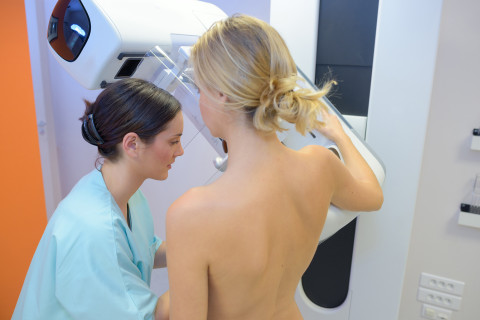Researchers at the University of Eastern Finland have developed a novel artificial intelligence based algorithm, MV-DEFEAT, to improve mammogram density assessment. This development holds promise for transforming radiological practices by enabling more precise diagnoses.
High breast tissue density is associated with an increased risk of breast cancer, and breast tissue density can be estimated from mammograms. The accurate assessment of mammograms is crucial for effective breast cancer screening, yet challenges such as variability in radiological evaluations and a global shortage of radiologists complicate these efforts. The MV-DEFEAT algorithm aims to address these issues by incorporating deep learning techniques that evaluate multiple mammogram views at the same time for mammogram density assessment, mirroring the decision-making process of radiologists.
The research team involved with AI in cancer research consists of Doctoral Researcher Gudhe Raju, Professor Arto Mannermaa and Senior Researcher Hamid Behravan. In the present study, they employed an innovative multi-view deep evidential fusion approach. Their method leverages elements of the Dempster-Shafer evidential theory and subjective logic to assess mammogram images from multiple views, thus providing a more comprehensive analysis.
MV-DEFEAT showed remarkable improvements over existing approaches. It demonstrates a significant improvement in mammogram screening accuracy by automatically and reliably quantifying the density and distribution of dense breast tissue within mammograms. For instance, in the public VinDr-Mammo dataset which consists of over 10,000 mammograms, the algorithm has achieved an impressive 50.78% improvement in distinguishing between benign and malignant tumours over the existing multi-view approach.
The image below illustrates the gradient-based saliency maps predicted by the MV-DEFEAT model highlighting the relevant regions of interest and capturing the information that can assist the radiologist in the decision making process.

The picture shows original mammograms on the top from different views. The red parts on the second row are the areas the computer-assisted model focuses on when deciding how dense the breast is. The model learns to find these important areas by itself to help it classify breast density.
Interestingly, the algorithm’s effectiveness persisted across different datasets, reflecting its robust performance to adapt to diverse patient demographics. The study utilised extensive data from four open-source datasets, enhancing the algorithm’s applicability and accuracy across different populations. Such capabilities underline the importance of AI-based approaches in medical diagnostics. Furthermore, while MV-DEFEAT significantly aids in breast cancer screening, the team at the University of Eastern Finland emphasises the need for continued refinement and validation of the algorithm to ensure its reliability and efficacy in clinical settings.
These promising results pave the way for the use of AI in enhancing diagnostic processes, potentially leading to earlier detection and better patient outcomes in breast cancer care.
“To fully integrate AI like MV-DEFEAT into clinical practice, it is crucial to build trust among healthcare professionals through rigorous testing and validation. Indeed, our next steps involve further validation studies to establish MV-DEFEAT as a reliable tool for breast cancer diagnostics in Finland,” says Doctoral Researcher Raju Gudhe of the University of Eastern Finland.
Research article:
Gudhe, N.R., Mazen, S., Sund, R., Kosma, V.M., Behravan, H. and Mannermaa, A., 2024. A Multi-view deep evidential learning approach for mammogram density classification. IEEE Access.
For further information, please contact:
Doctoral Researcher Raju Gudhe, Raju.gudhe@uef.fi
Multi-disciplinary Cancer Research Community, University of Eastern Finland.
Senior Researcher, Hamid Behravan, PhD, hamid.behravan@uef.fi
Multi-disciplinary Cancer Research Community, University of Eastern Finland.
Professor Arto Mannermaa, PhD, arto.mannermaa@uef.fi
Multi-disciplinary Cancer Research Community, University of Eastern Finland.



